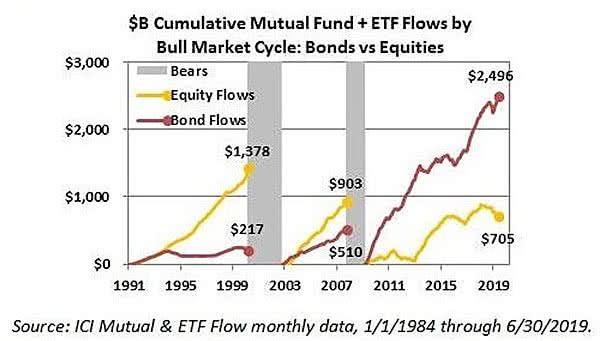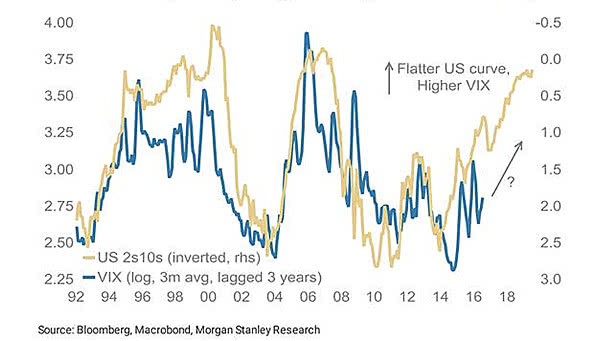Cumulative Mutual Fund + ETF Flows by Bull Market Cycle: Bonds vs. Equities Flows
Cumulative Mutual Fund + ETF Flows by Bull Market Cycle: Bonds vs. Equities Flows Is this the most hated bull market in history? Well, investors continue buying bonds. Image: ICI Mutual & ETF Flow


